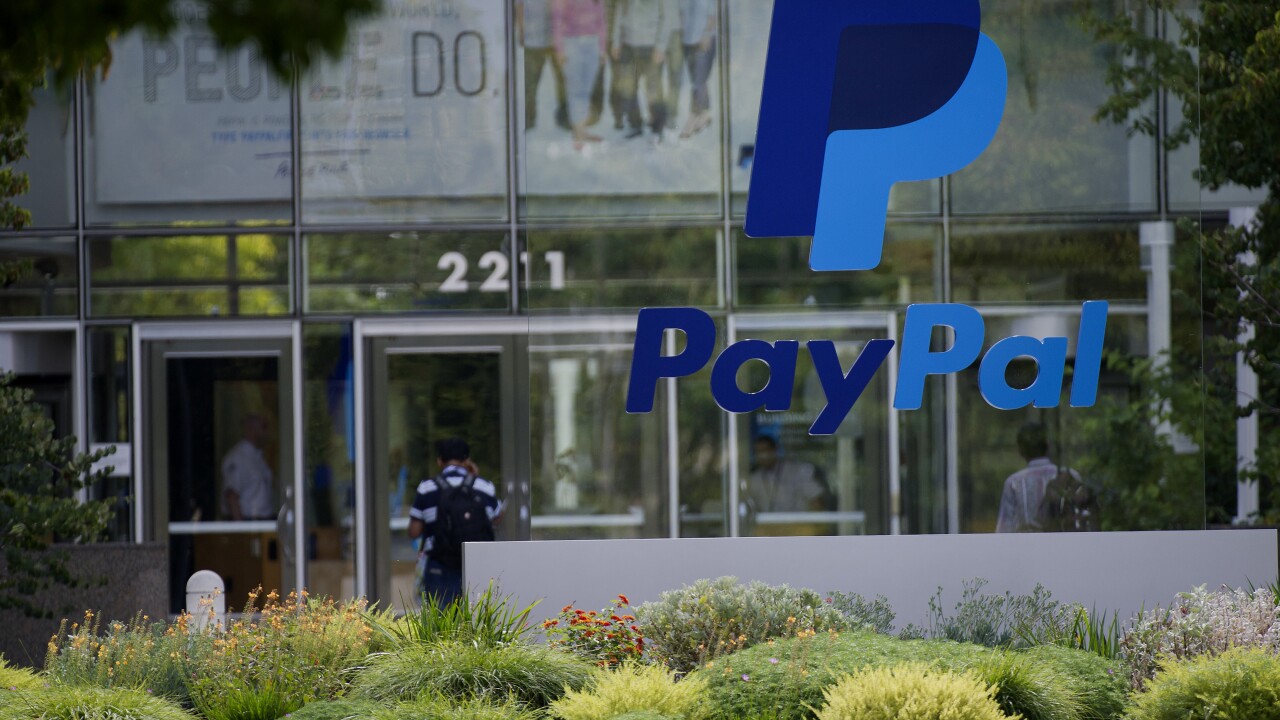Market research experts, industry visionaries, and bank executives are weighing in with radically different visions of the future of wireless banking.
The big question: Is wireless a passing fad or the "killer app" that will transform banks' value proposition?
The answer: Wireless is not just the next big thing - it's the next huge thing, a delivery channel that will surpass the Internet in the e-commerce gold rush. And as with Web banking, organizations that wait on the sidelines may be hard-pressed to catch up.
Wireless service poses some interesting challenges - infrastructure, interface limitations, and content packaging and delivery among them - which will be quickly conquered. But these are nothing compared with the promise that the mobile Internet offers to early movers.
Business Week estimates there will be one billion wireless users worldwide by 2003, and Meridien Research projects 40 million wireless users of financial services. These statistics are likely to be revised upward within the next few months.
Naysayers would argue that wireless use will not translate to a critical mass of transaction-heavy financial services customers. Here's why they're wrong.
Cellular phones, which dominate the wireless market, channel information through the simplest and most effective human interface of them all: voice. Customers want and demand voice support to guide them through the sometimes bewildering maze of Internet commerce.
But the wired Web, despite the richness of its resources, has suffered from a lack of integrated voice support. Some 80% of customers who initiate a Web-based transaction quit before ever completing it, says Business Week.
Though Internet telephony is evolving rapidly, wireless devices will have the edge because of their ease of use, portability, and targeted "soundbytes." And with the addition of voice recognition, a technology that will soon reach maturity, one of the chief drawbacks to wireless - its limited screen size and keyboard - will be overcome.
Equally importantly, wireless devices provide an unprecedented piece of information on their users: their location. For the first time in the history of banking, we will know where our customers are, almost to the footfall. By October 2001,all U.S. wireless carriers will be required to have tracking systems in place that can locate cell phone callers to within 120 meters, per a Federal Communications Commission mandate, says Business 2.0.
How banks will exploit wireless' geographic sensitivity remains to be seen. Permission for such marketing will be integral to these efforts. But the potential remains enormous nonetheless. Will we offer a credit extension to a Virginia resident who's in Aruba? Pitch travel insurance to a customer who's walking through Chicago's O'Hare? Help someone find the nearest ATM?
Banks slow to capitalize on this rich store of free marketing data risk losing customers to more agile adversaries: their dot-com competitors. With wireless the catch phrase "location, location, location" has never been truer.
Sure, the wired Web has given customers around-the-clock access to financial services - but they still have to dial up, load Web pages, and search for information. Now customers will experience an unprecedented level of freedom. No longer fettered to PCs, they will be able to access anything, anywhere, anytime. A world of financial information and services will rest, quite literally, in the palm of their hand.
Wireless customers will also relish their ability to acquire and react to information that's packaged for them in bite-size chunks. They'll become more spontaneous, conducting transactions instantly in response to information piped into their devices, whether it's transferring funds to avoid an overdraft, paying bills, buying and selling stocks, or purchasing services and products we haven't even dreamed of yet.
Finally, cell phones are companions in ways PCs will never be - portable, user-friendly, and powered by voice. They will reach customer groups who have never adopted the wired Internet, as well as expand options with the ones who have. People have an emotional attachment to their phones. It's not just a resource; it's a friend.
The early movers in the wireless movement overseas - led by Finland's MeritaNordenbanken, Canada's Bank of Montreal and Japan's NTT Docomo - have already posted impressive results.
According to Meridien Research, Merita's customers use the bank's wireless services to conduct more than 200,000 transactions a month, while more than half of Montreal's pilot group accessed their accounts every single day.
Perhaps the best test-case for the potential of wireless, however, can be seen in the Japanese people's wildfire adoption of Docomo's proprietary wireless service.
Rather than wait for the government to impose a single standard, Docomo rolled out its own, i-mode, and cornered the market in the process. In just over a year, nearly seven million Japanese signed up for the service. (This is especially impressive given the service's slow data-transfer rates, which will be solved with new technology next year.)
In response to customer demand, the market has answered. More than 6,000 Web sites have been launched or adapted for i -mode's users.
The revolution has begun, but time is of the essence. With key players Bank of America and Citigroup months away from rolling out full-scale initiatives in the United States, banks that wait will miss out on the most transformative force to hit business since the Internet.
Ms. Devine is senior vice president of the consumer financial services group at American Management Systems in Fairfax, Va.





